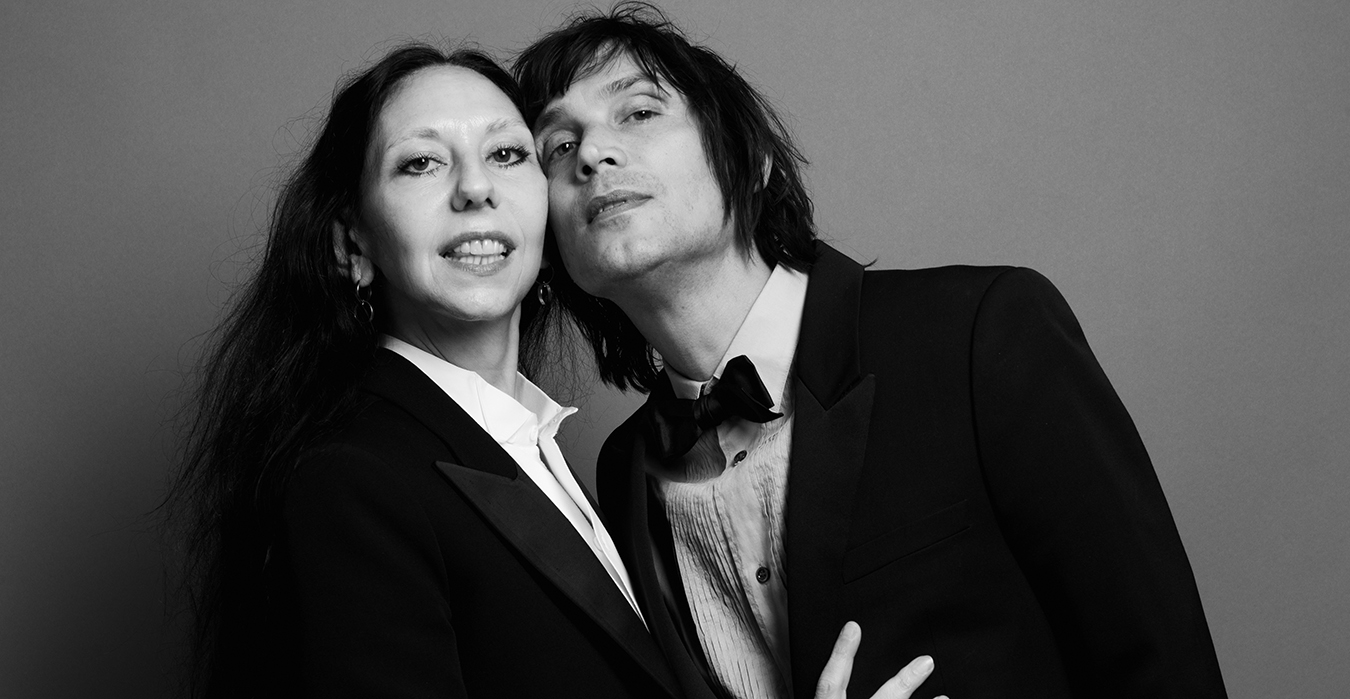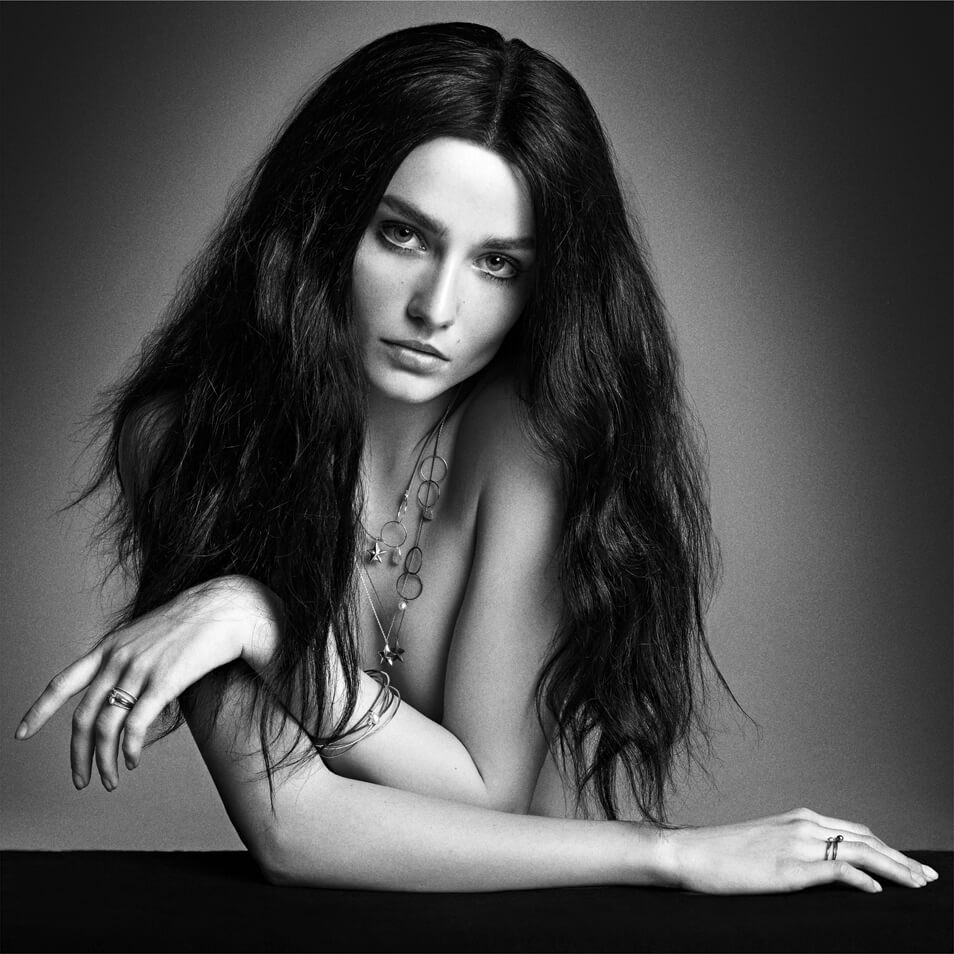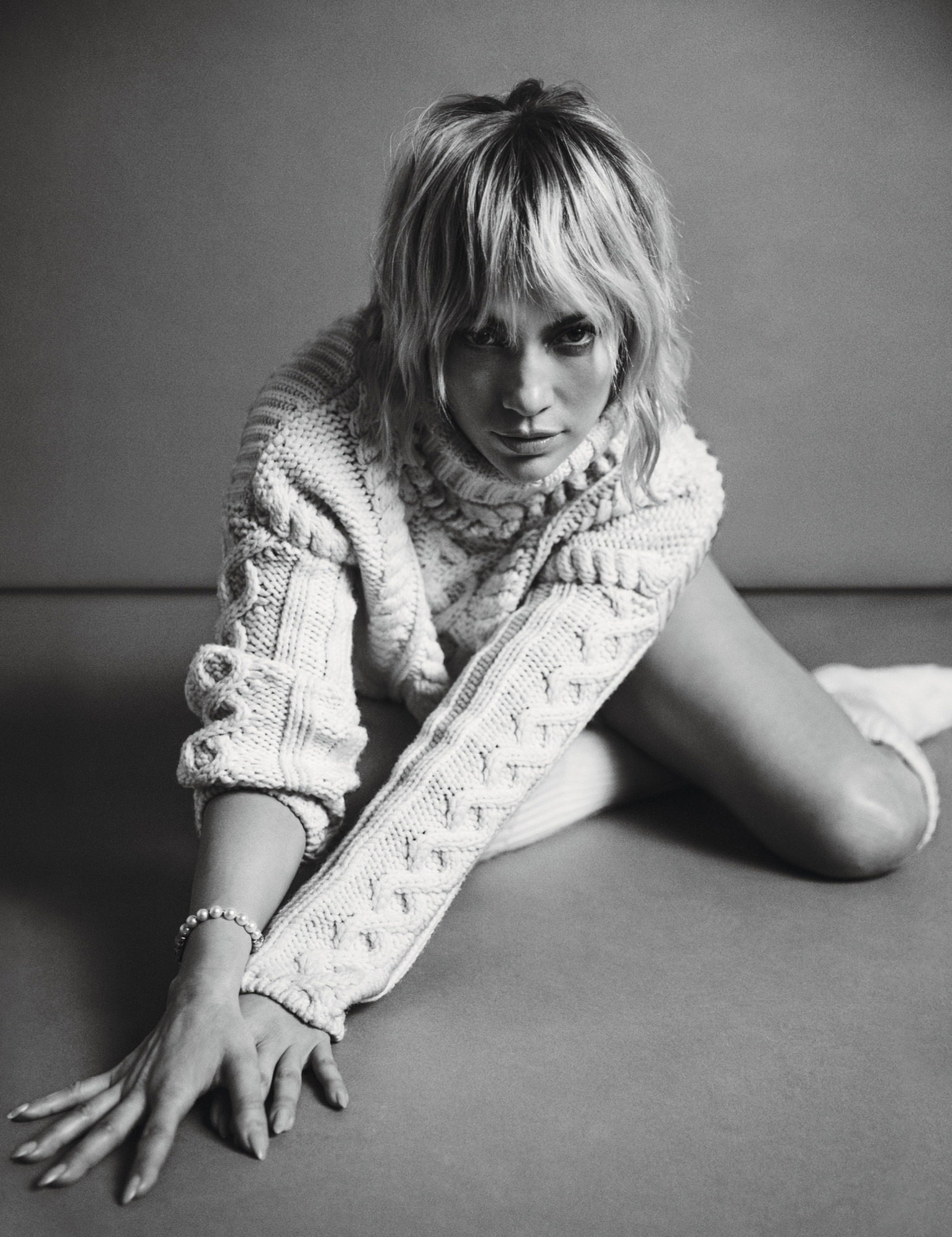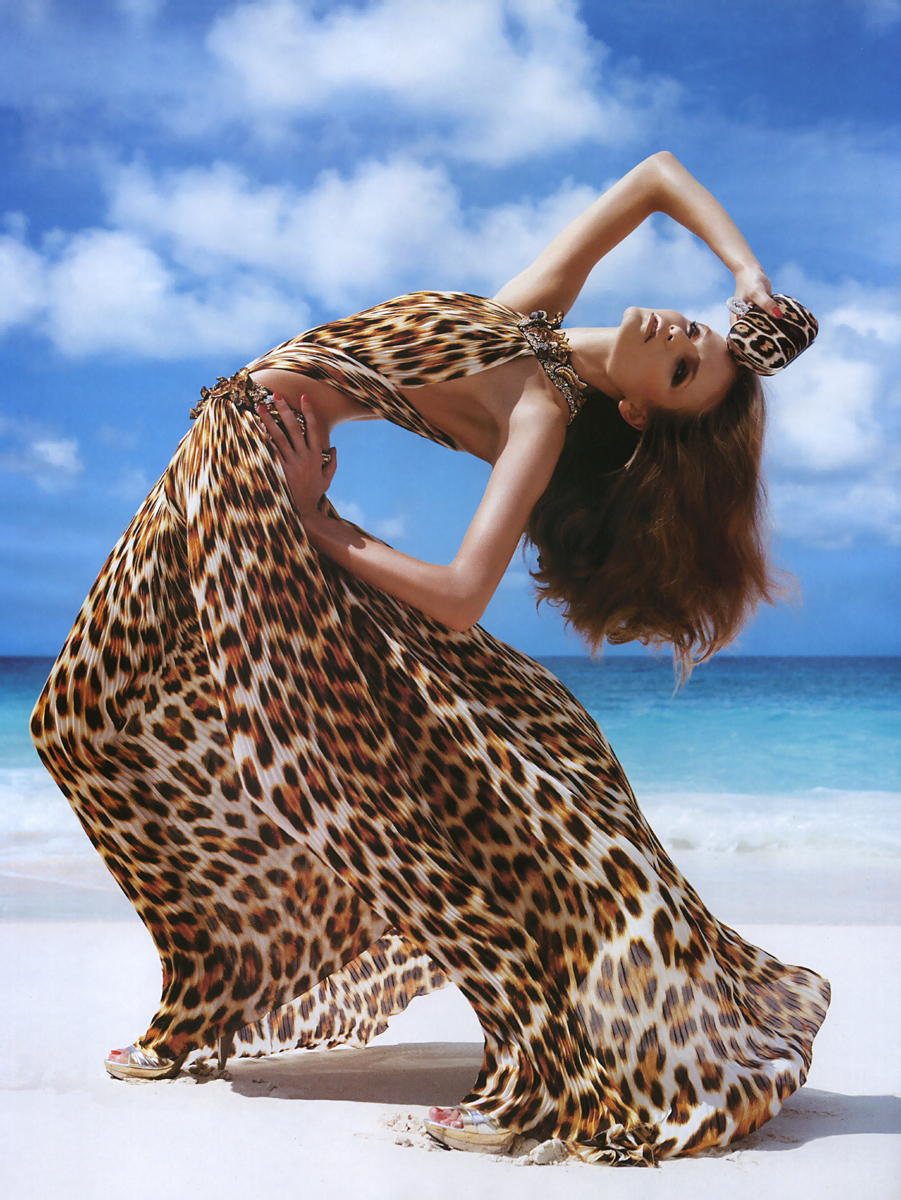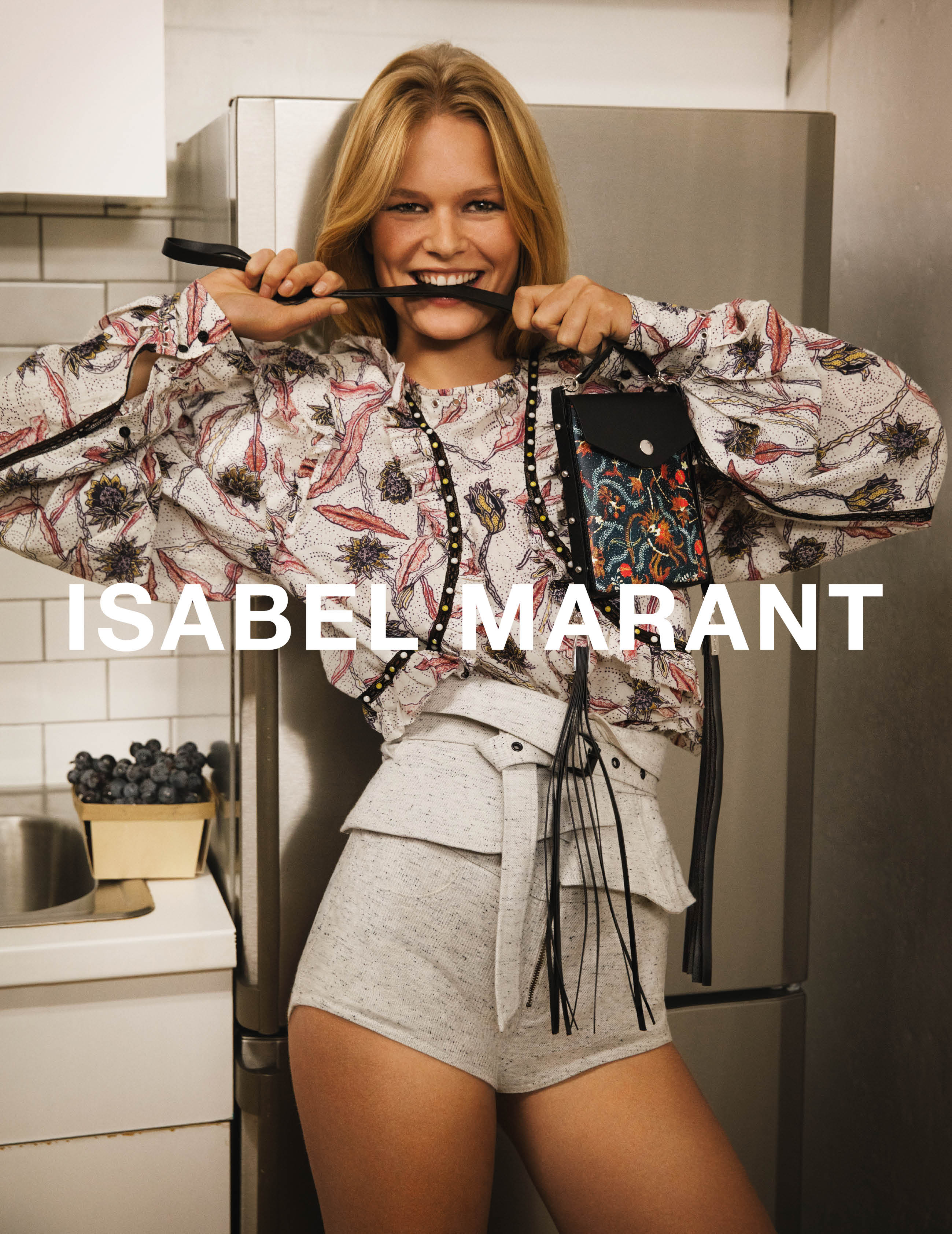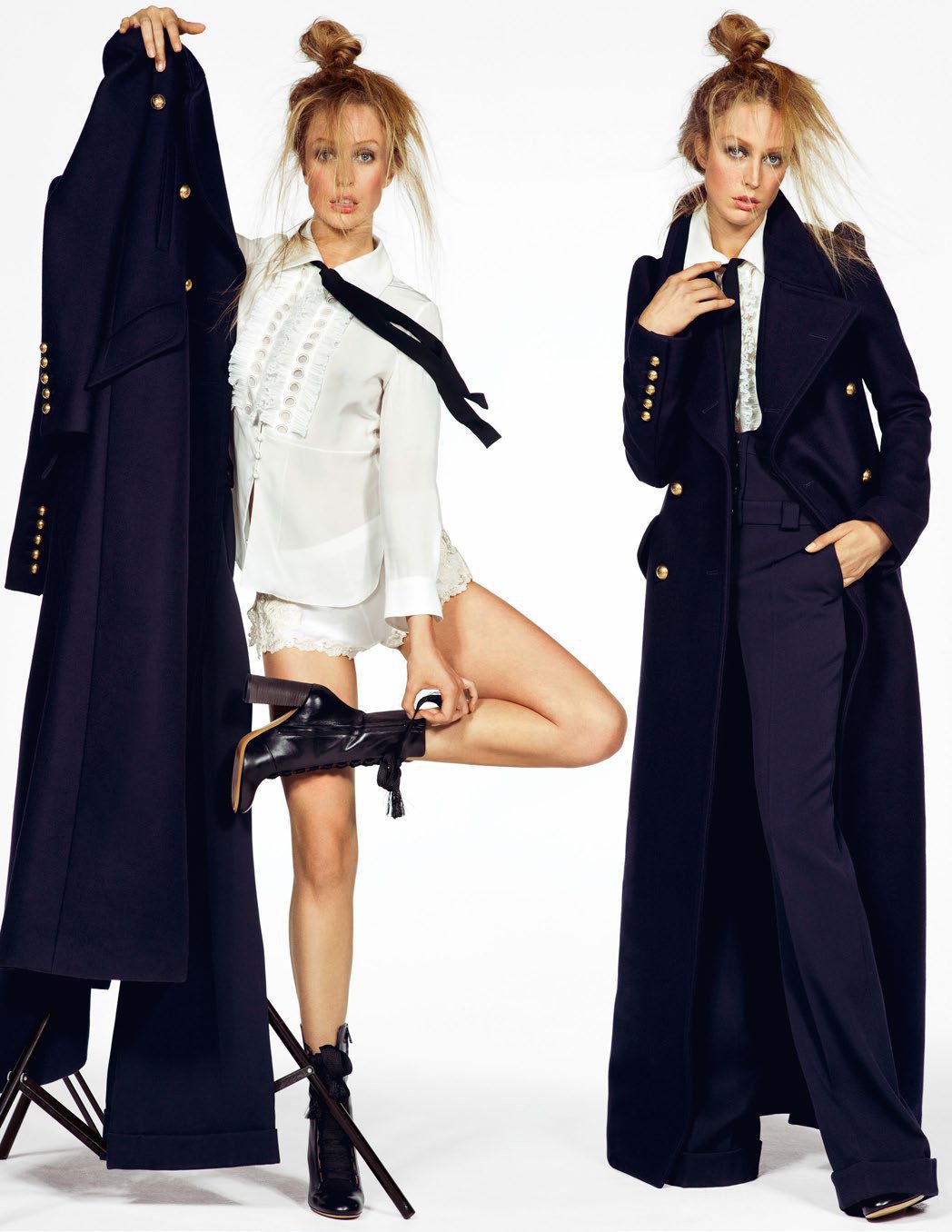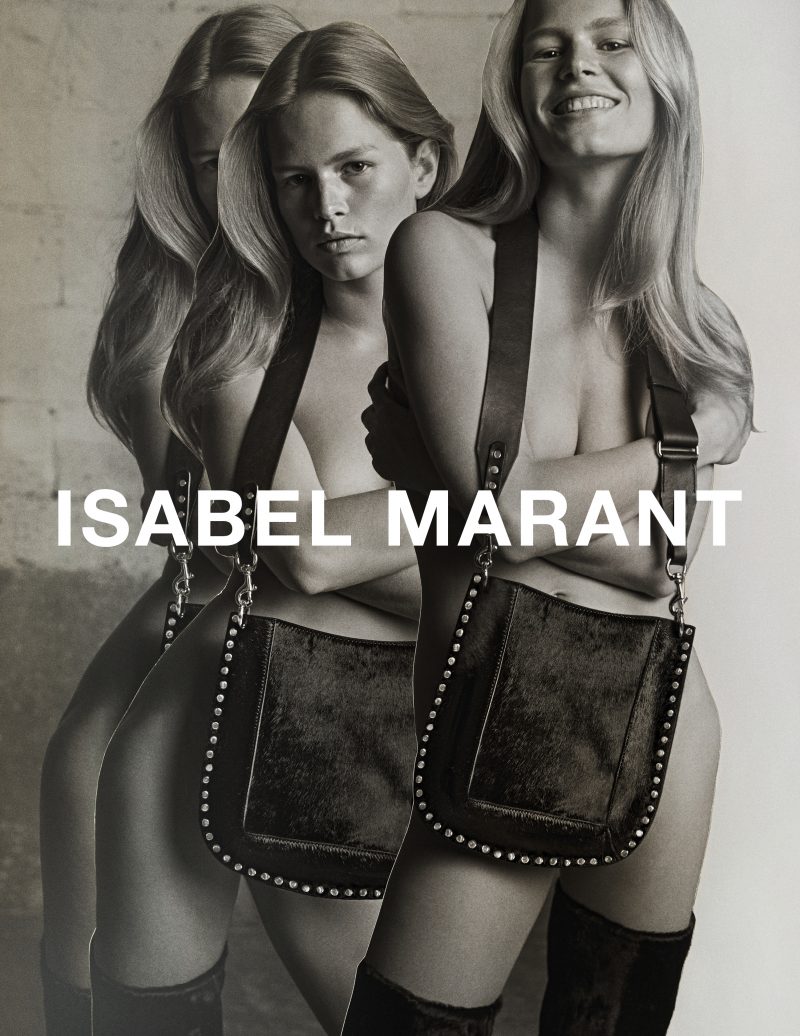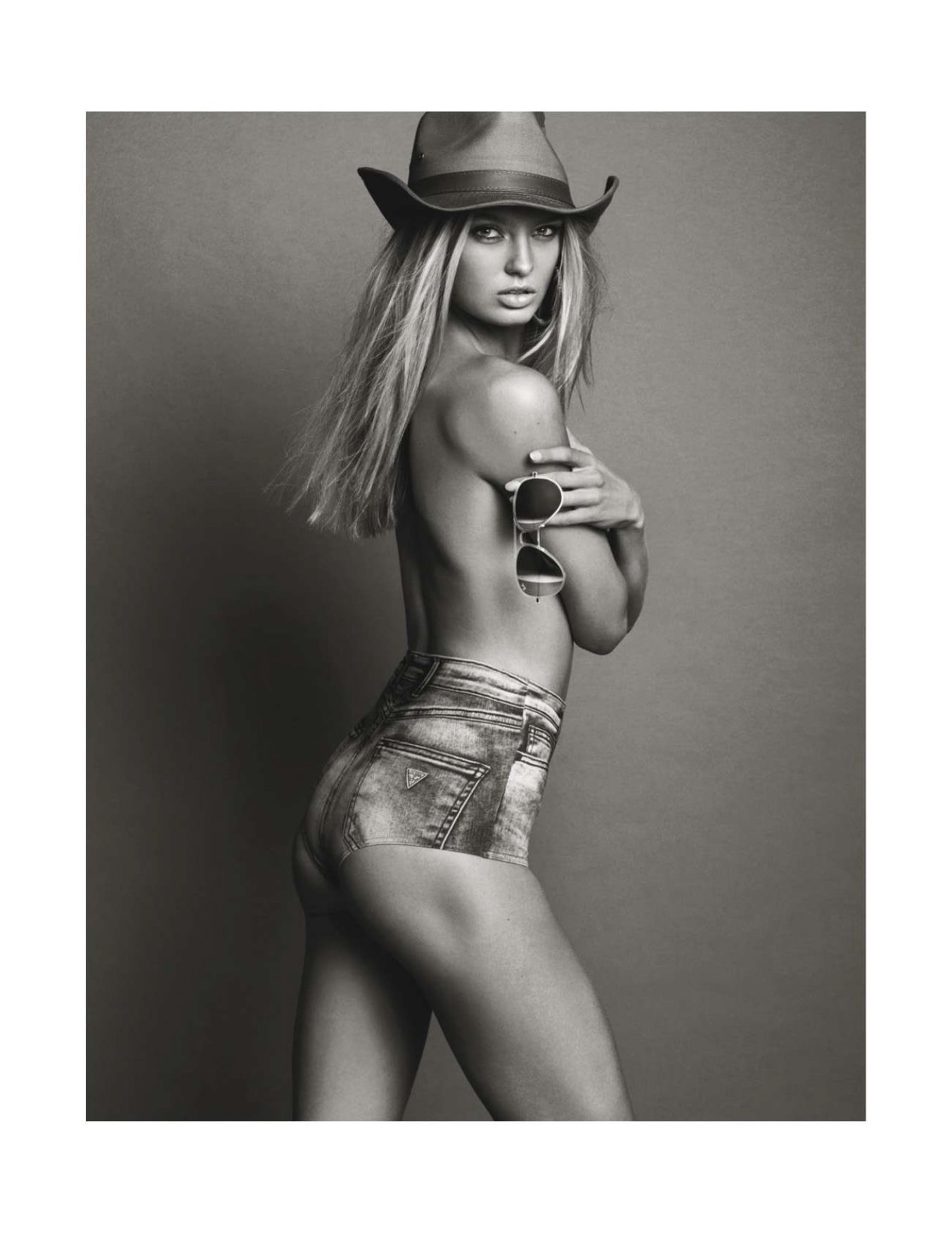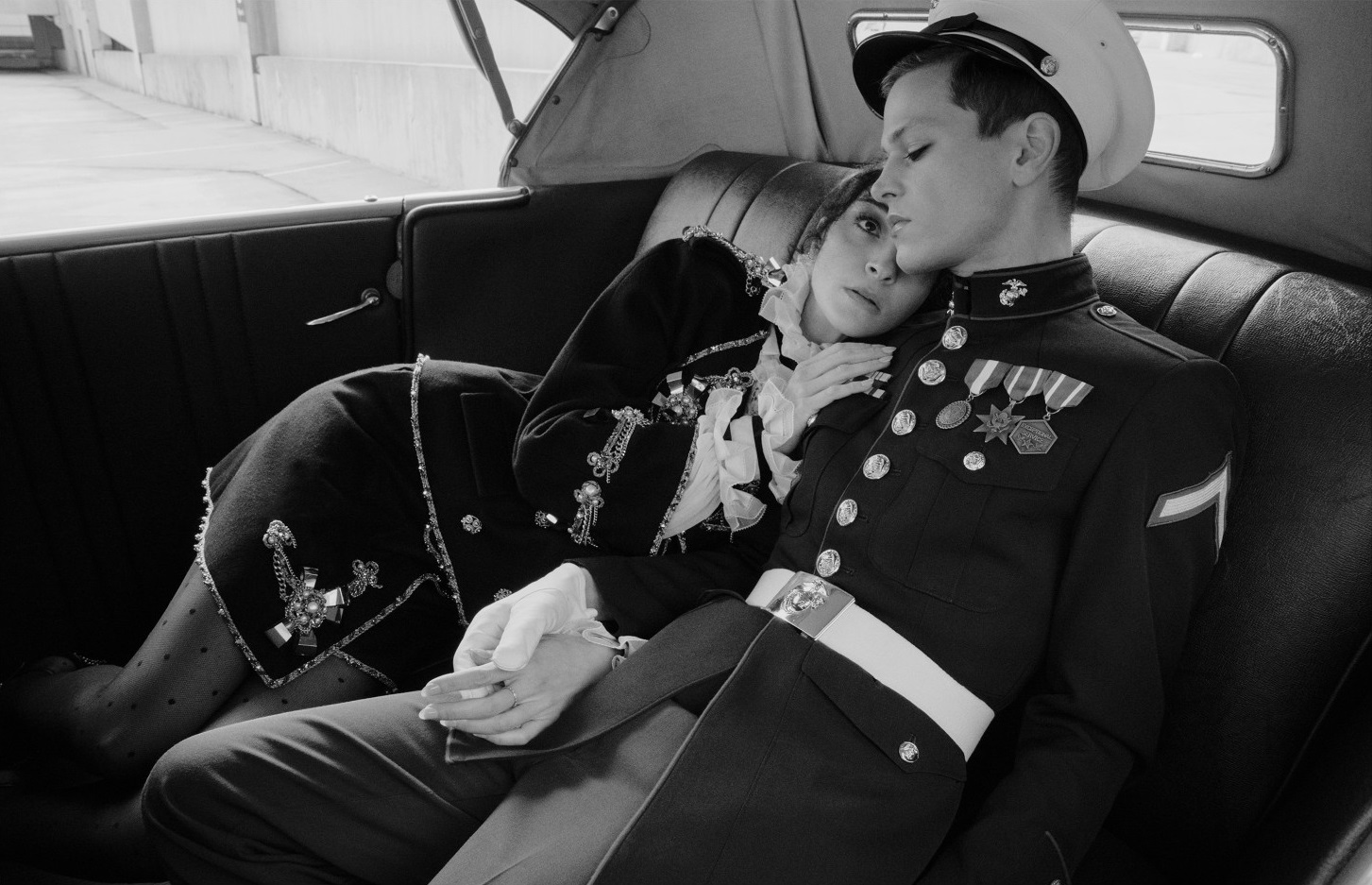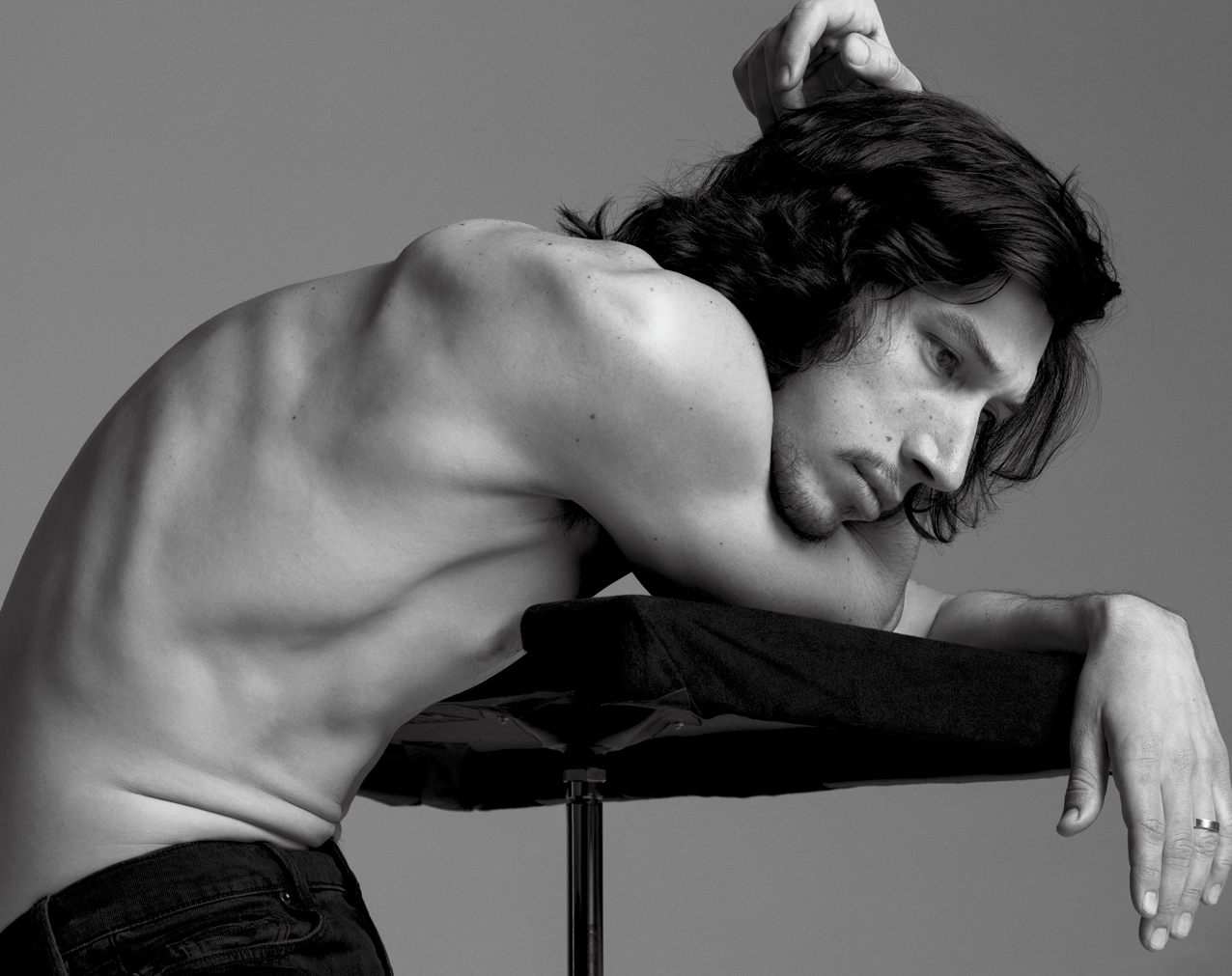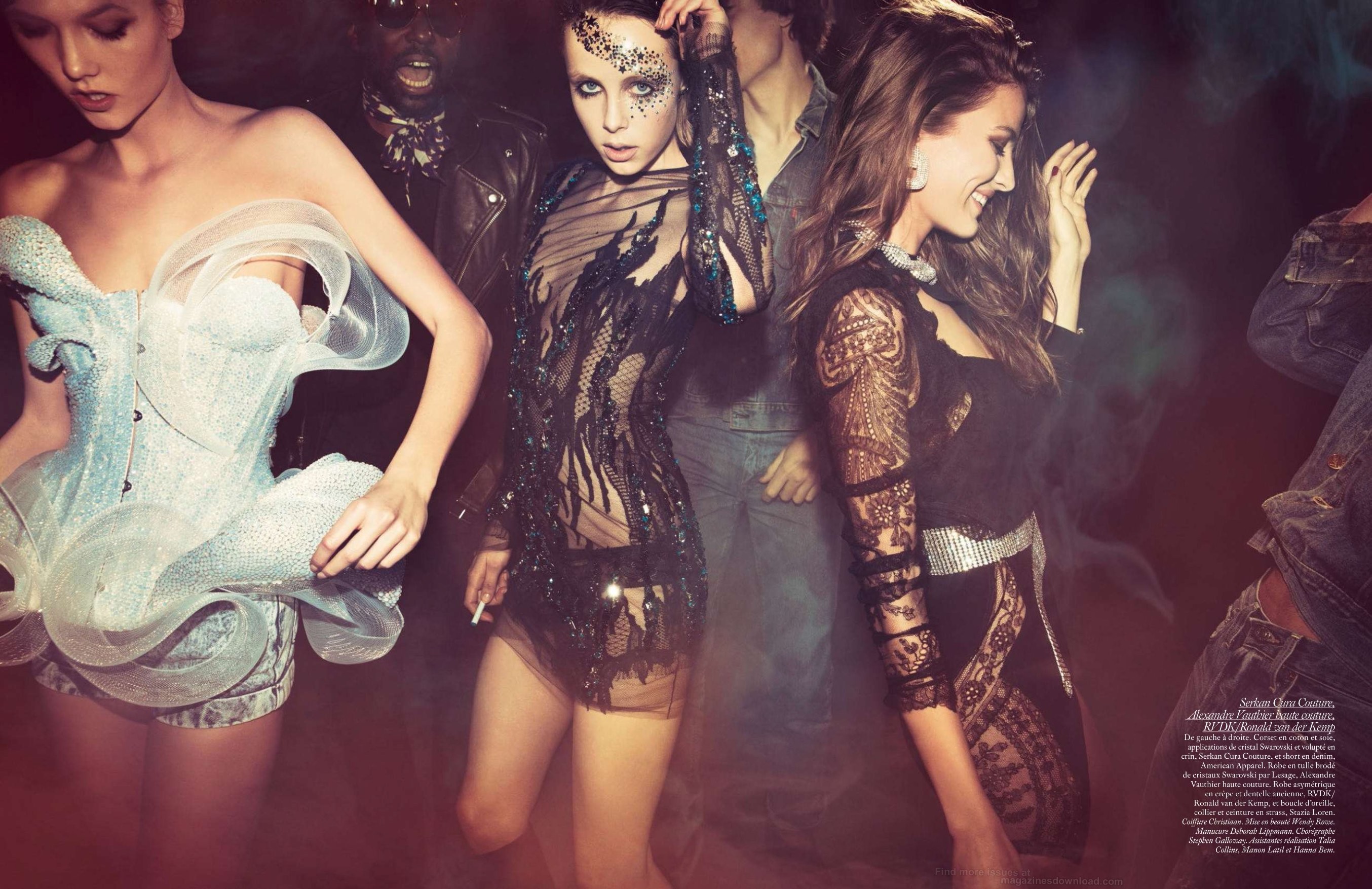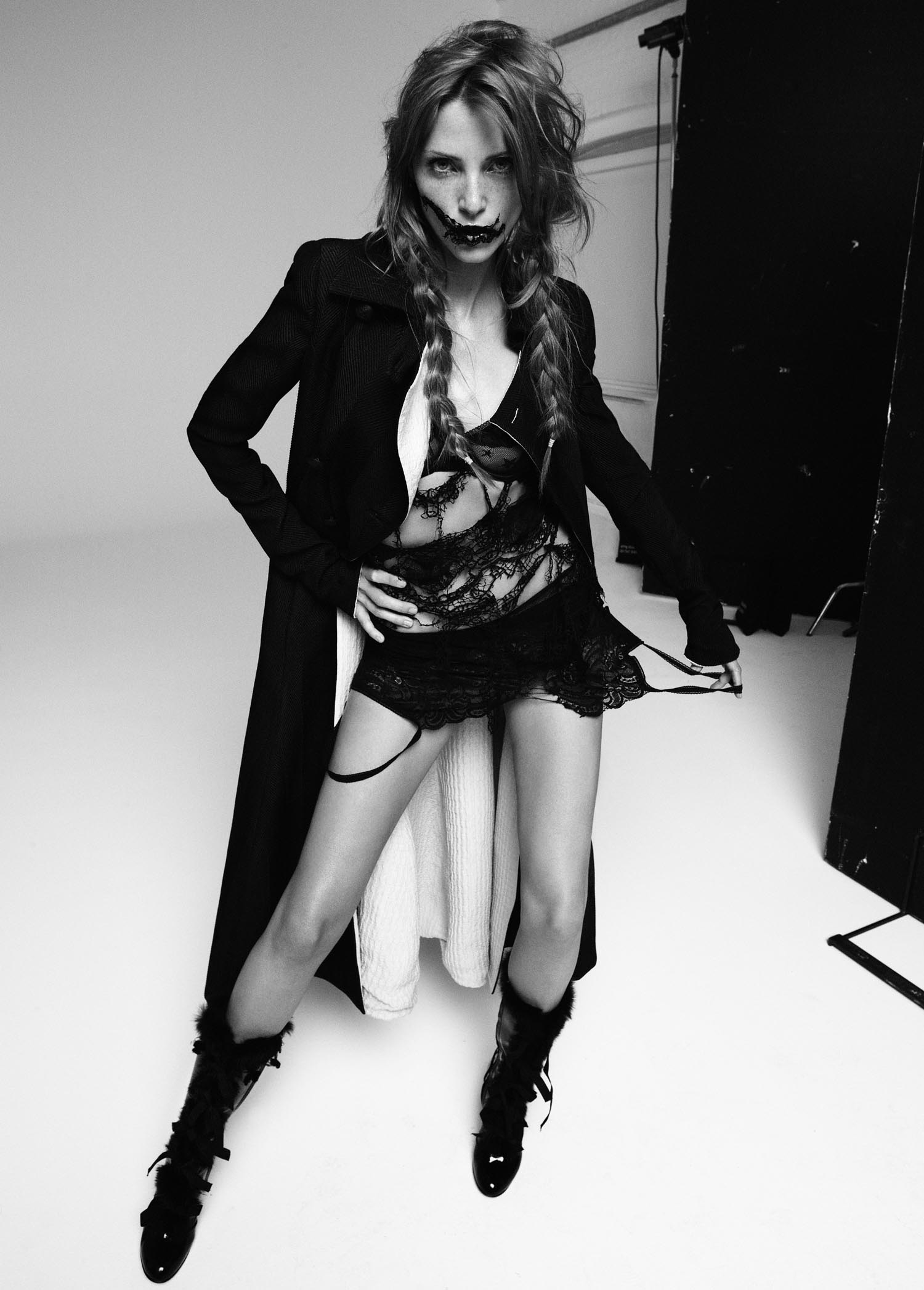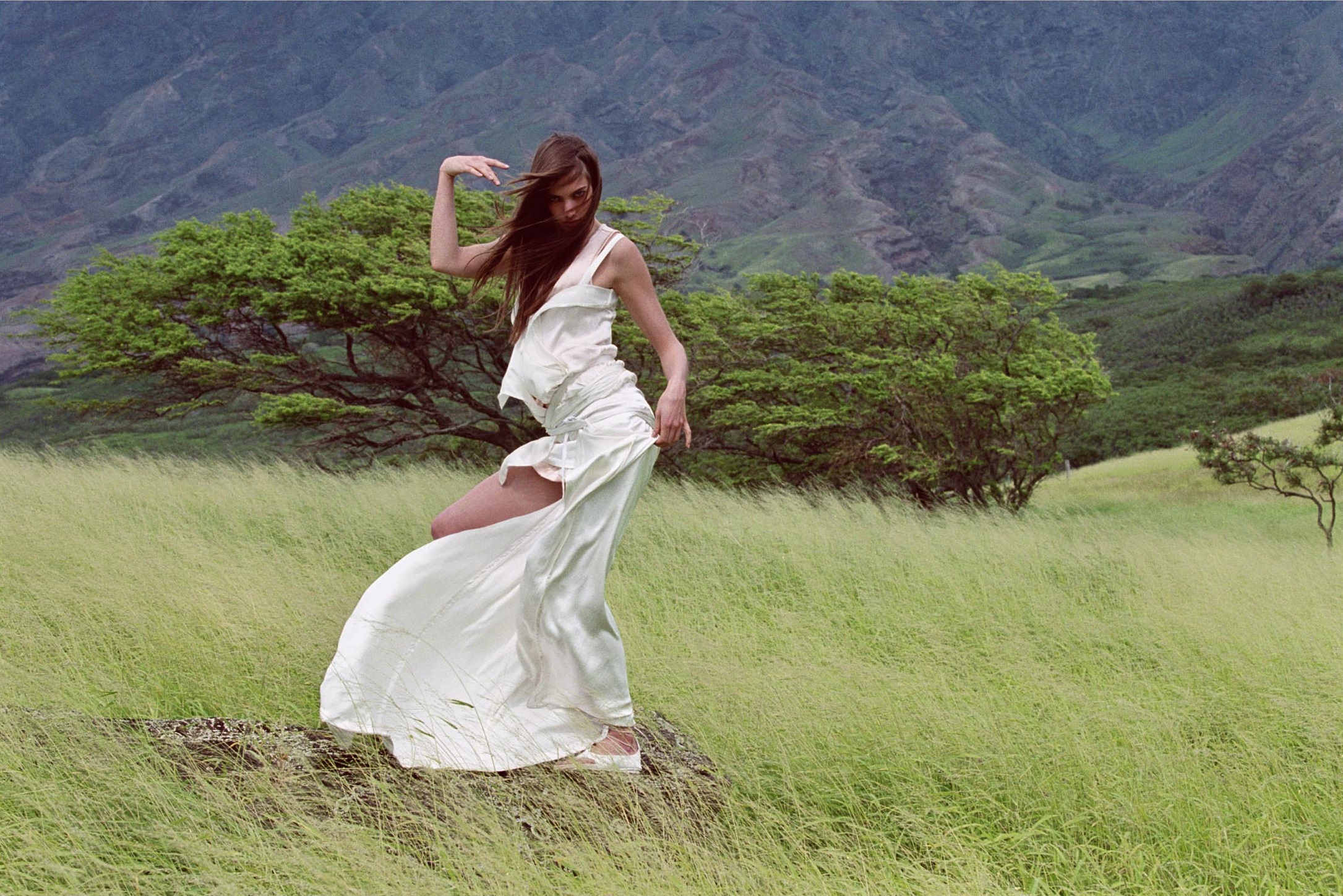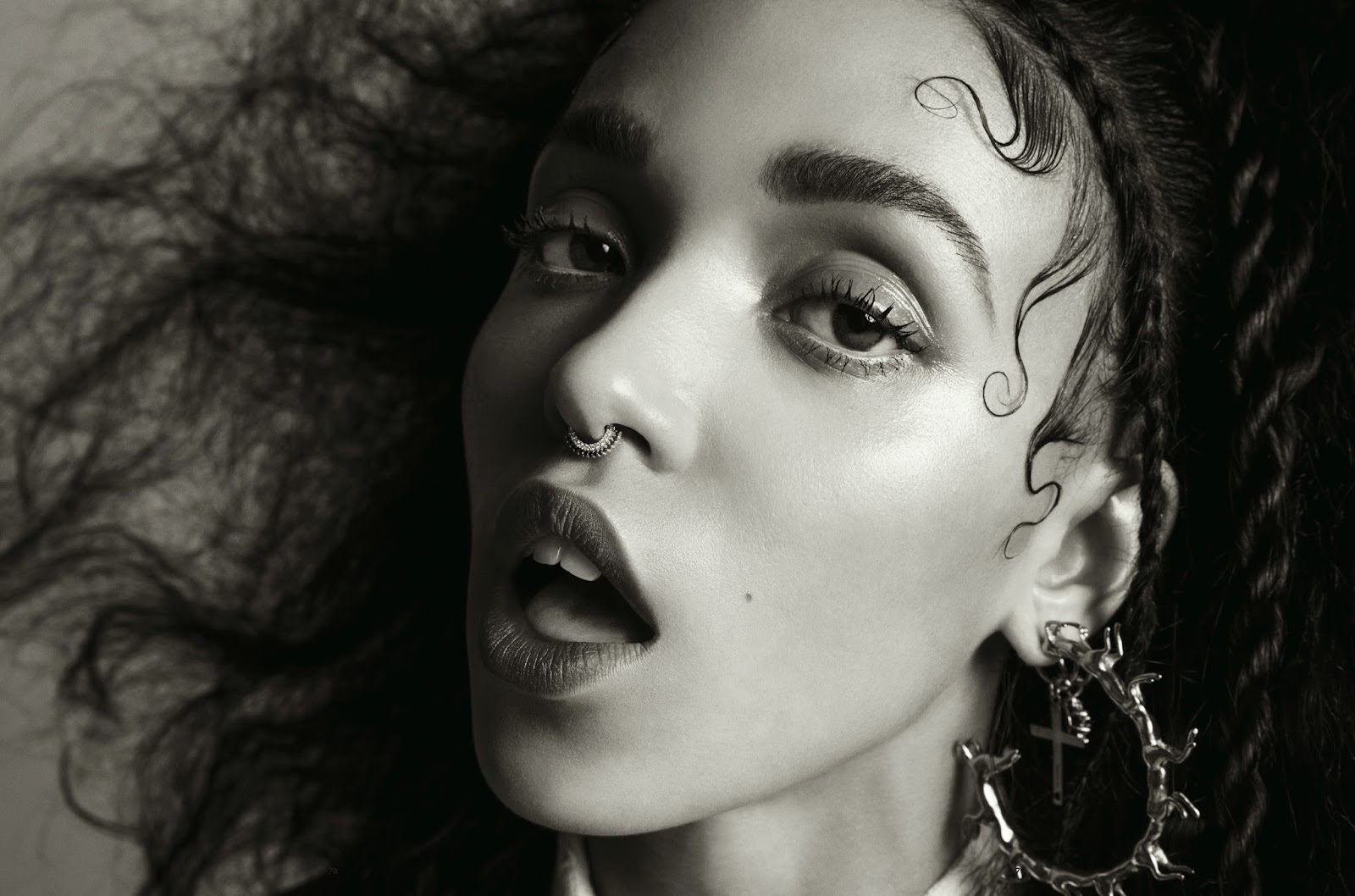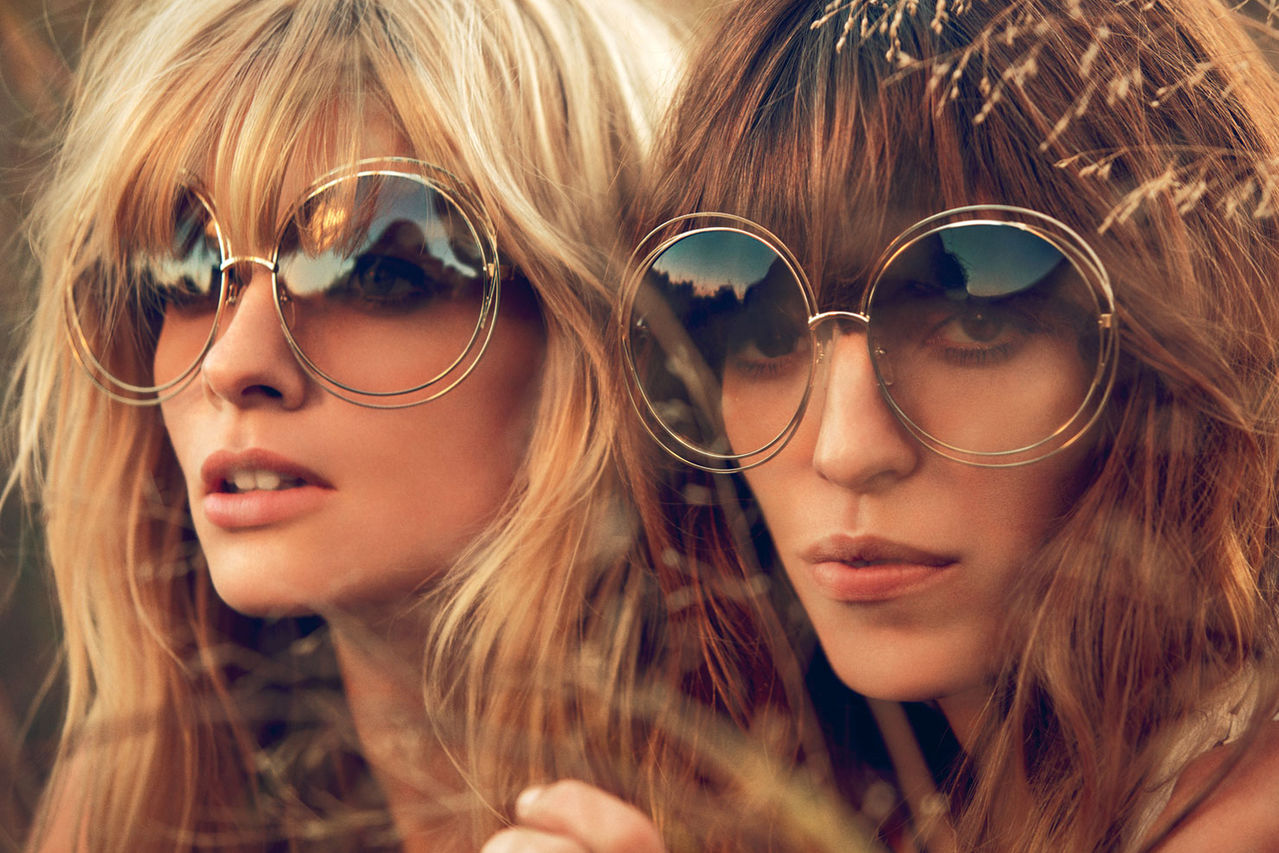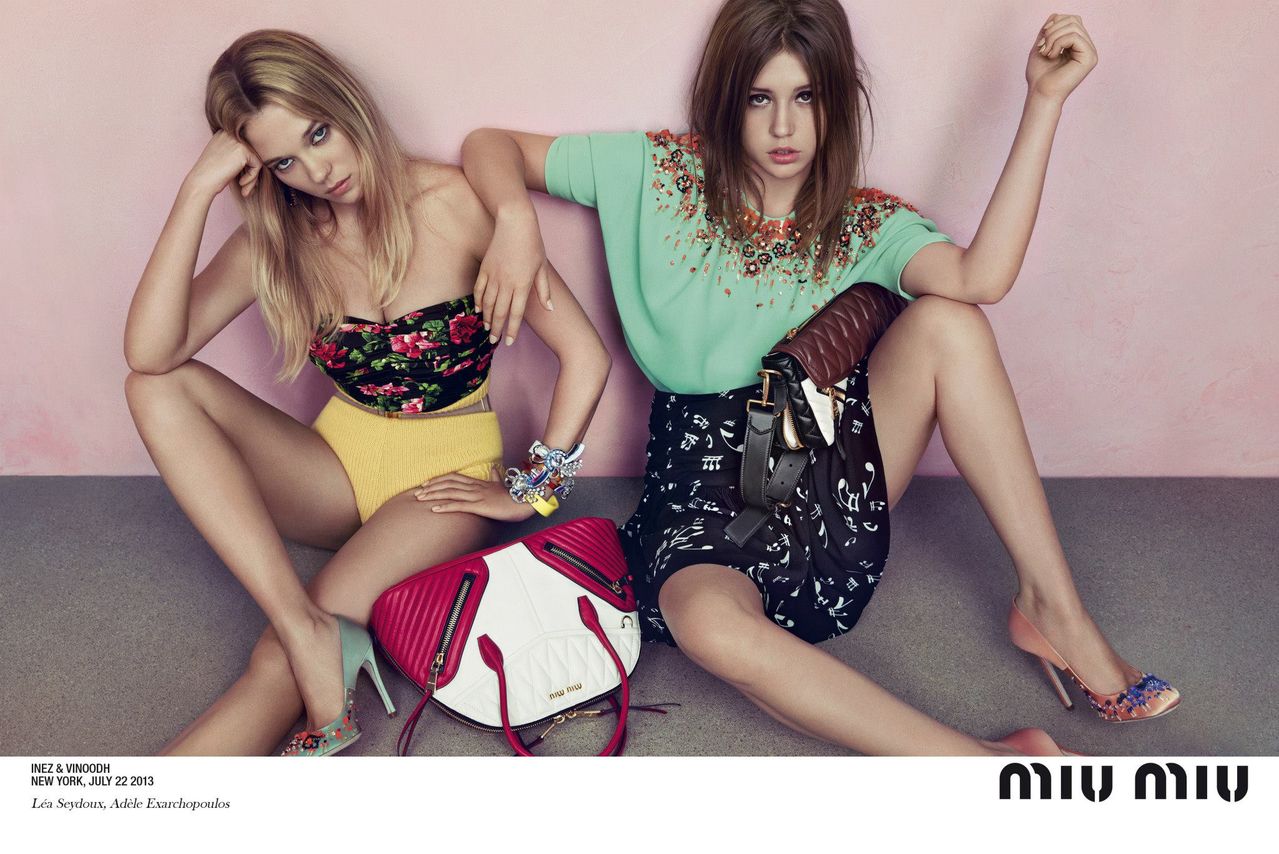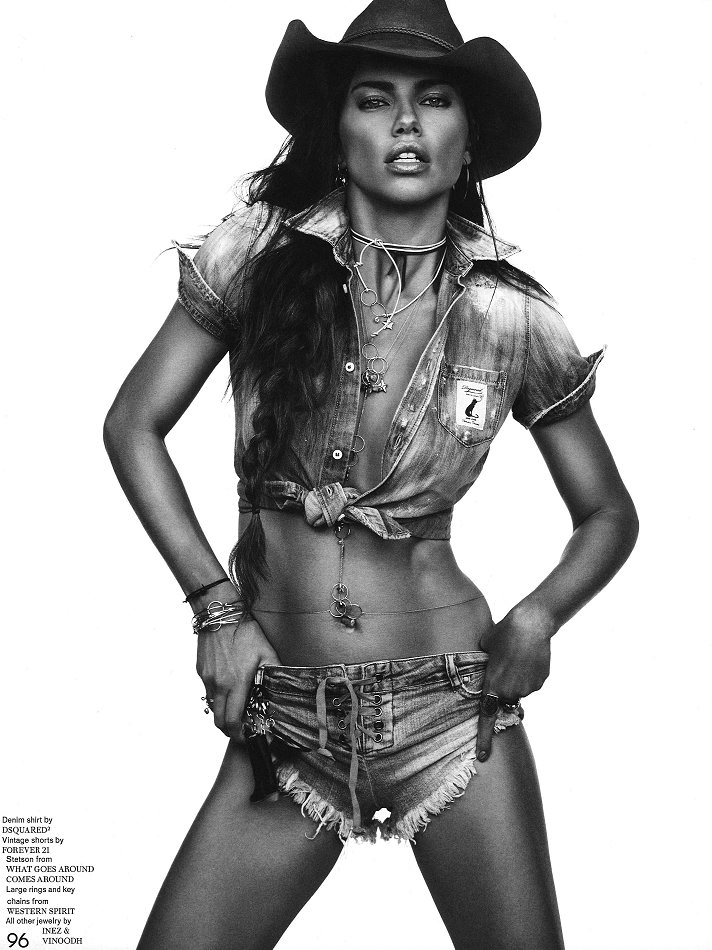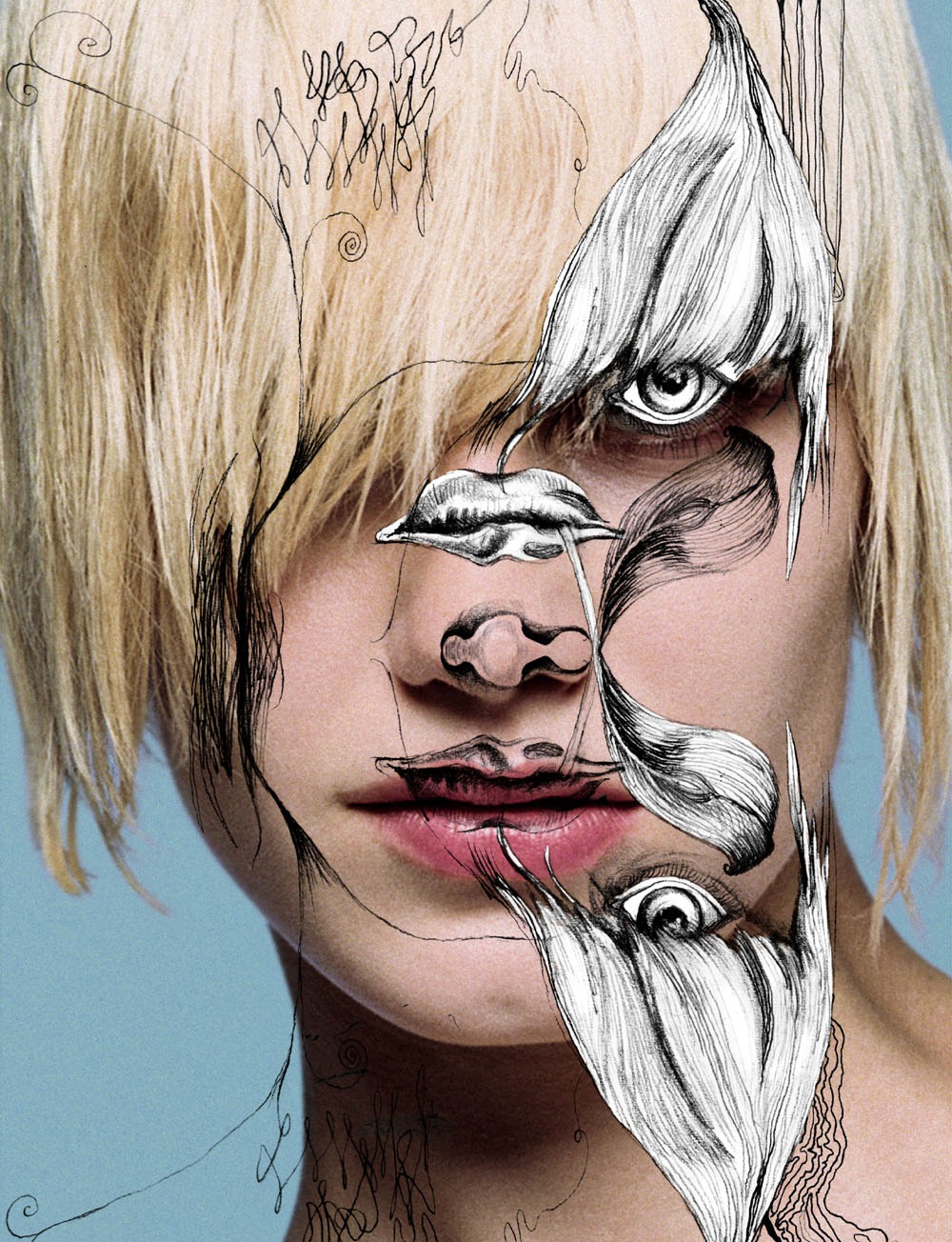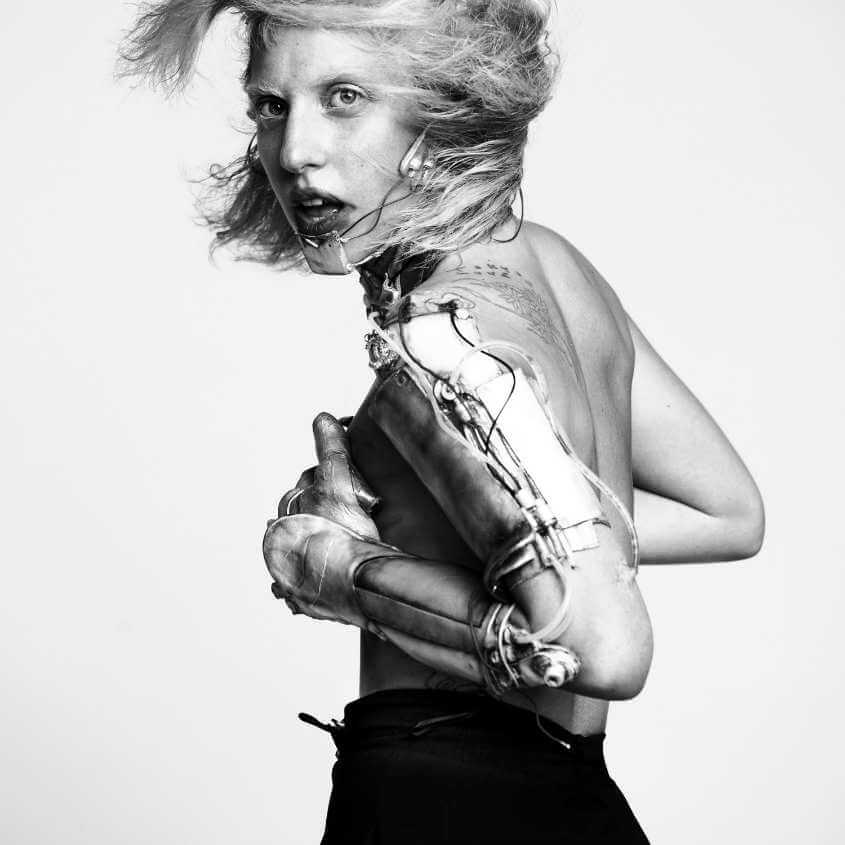After meeting 30 years ago as a fledgling fashion photographer and designer, Inez Van Lamsweerde & Vinoodh Matadin have transformed themselves into fashion’s leading photography couple.
Their work has become synonymous with inspiration and transformation, bridging the divide between technology and art, the past and the future, and reality and dreams. The Impression’s Kenneth Richard spoke with Inez about their early years, the birth of photographer pairs, disco, Instagram, the Emmys, fashion films, John Hughes, and that first photograph.
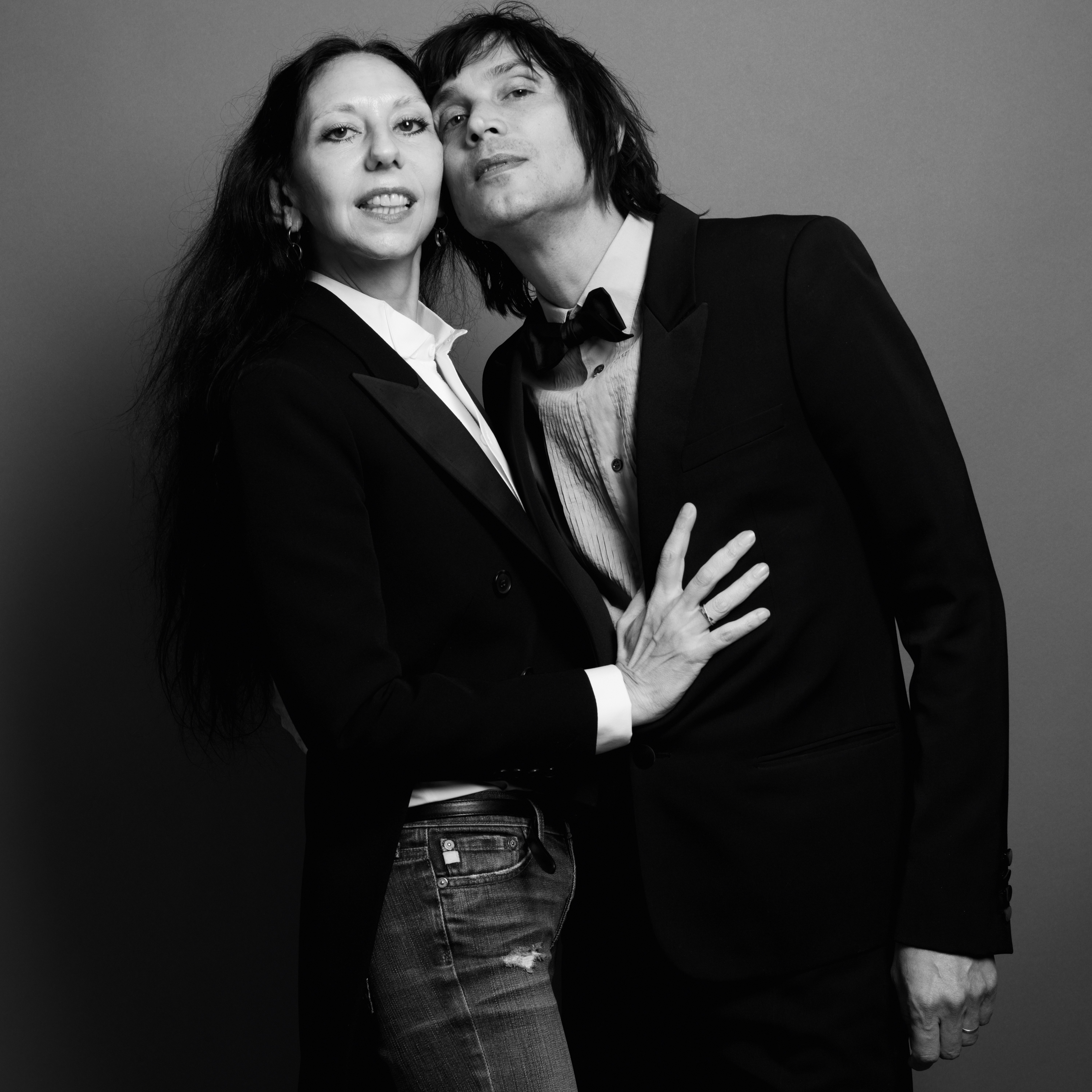
Kenneth Richard: Inez, very nice to chat. We’ve been talking about firsts lately, so would love to hear how you and Vinoodh first met.
Inez Van Lamsweerde: We were both at the Fashion Academy in Holland in 1985. Vinoodh was in his last year when I entered. But after that year, I went on to art school because I decided I didn’t want to be a fashion designer but a photographer instead. Vinoodh had made his first collection as a designer and needed someone to take pictures of the clothes. A friend of his recommended I take the pictures, and we started working together.
We fell in love instantly but I had a boyfriend and he had a girlfriend at the time, and things weren’t aligned. We worked on and off with each other for about six years, which was about the time it took to get our love lives aligned so that we could actually be partners in life as well as in work.
Kenneth Richard: So, how were his clothes?
Inez Van Lamsweerde: Vinoodh’s clothes were amazing. They were quite romantic and very strong. We were really inspired by each other. As he was working on the collections, we were dreaming up the pictures together each season. He had so many different influences. I wouldn’t really know what to compare it to except maybe what the Belgian designers were doing in the ’80s. I think he would have fitted very well within the group of the Antwerp Six.
Kenneth Richard: Good group! What prompted you to go to design school?
Inez Van Lamsweerde: My mother was a fashion journalist. I grew up looking at Paris Vogue all of my life. That was my point of reference. I always thought, “Oh, I’ll design.” It just seemed logical. I didn’t really think of photography, but then once I was in fashion school, I noticed I was just taking pictures all the time of my friends in my class, in different outfits styled by me. So then at some point, a friend of mine who was already in art school for photography said, “You know what? You should just focus on photography. It looks like you’re drawn more towards that side.” I applied to the Academy for photography and got accepted and that’s where I was. I always knew I wanted to do fashion photography. I applied this sense of direction to every assignment.
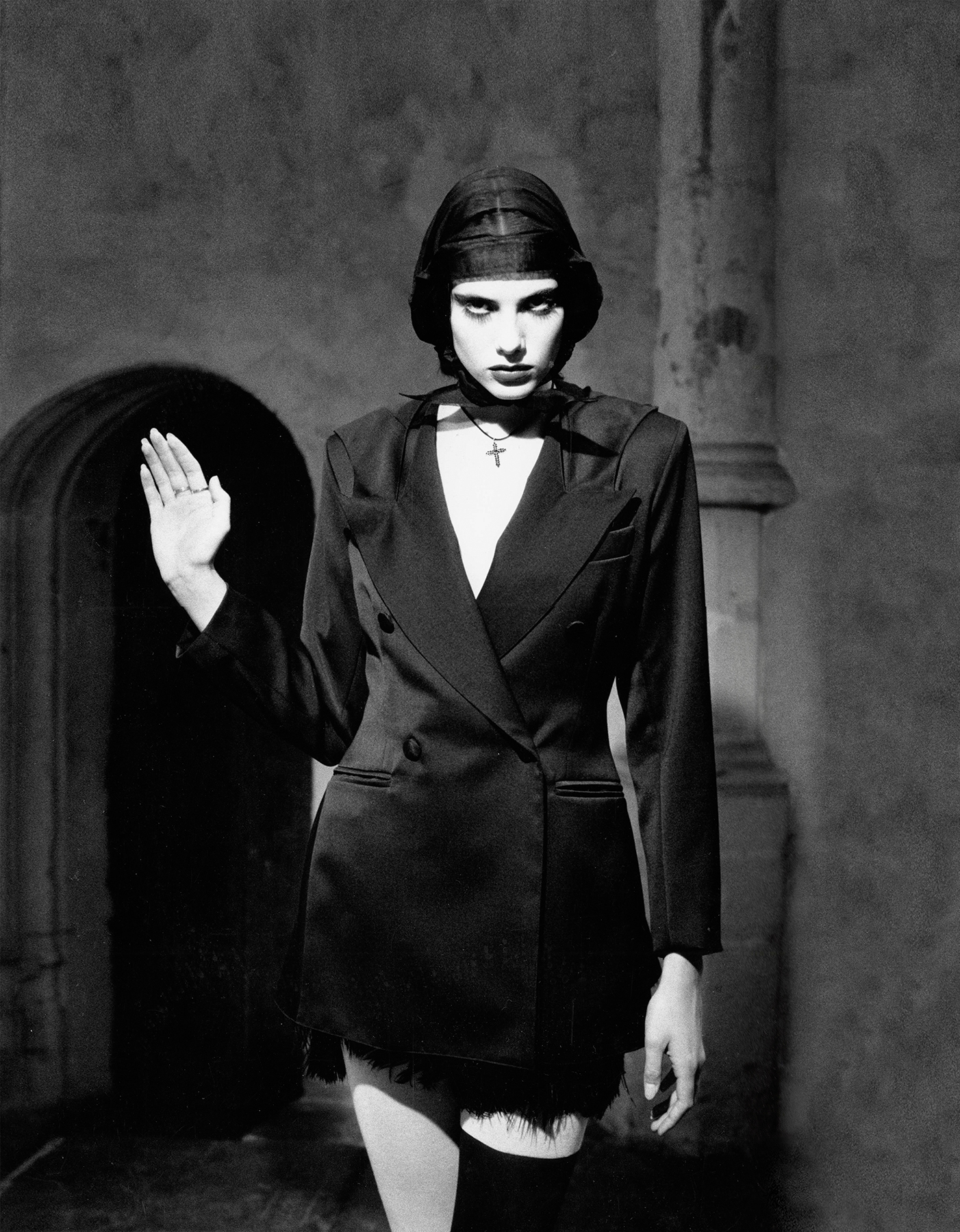
Kenneth Richard: How did you two jump out of Amsterdam?
Inez Van Lamsweerde: Vinoodh and I spent 1992 to 1993 as artists-in-residence at PS1 in New York. During that year, while we were making a body of work to show at PS1, we were also showing our book to magazines, agents and record companies. No one really wanted to represent us at that time. One agent in particular said to us, “You know what? You should go back to Europe and have your work published in a European magazine. Become a star in Europe, and then they’ll want you back here in New York. It’ll be a lot easier for you to then get work in New York as a photographer.”
We went back home in 1994 and did a shoot for a Dutch magazine called BLVD, and worked on a whole series with clothes by our friend Veronique Leroy.
We worked on this series using models that we shot in the studio with backgrounds that we found at stock image companies. The shots were published and they didn’t credit us so we decided that we had to get this printed somewhere else with our names. We sent it to The Face, where Lee Swillingham was art director. We sent it also to Interview here in New York, where we had met the art director as well. Interview sent it back unopened, and Lee Swillingham called immediately and said The Face never buys work that has been already published. He said, “I have to have this. Can I please publish it?” That ran in The Face in April 1994. The moment that came out, everything changed for us. American Vogue called us to do a series. The whole ball started rolling from there.
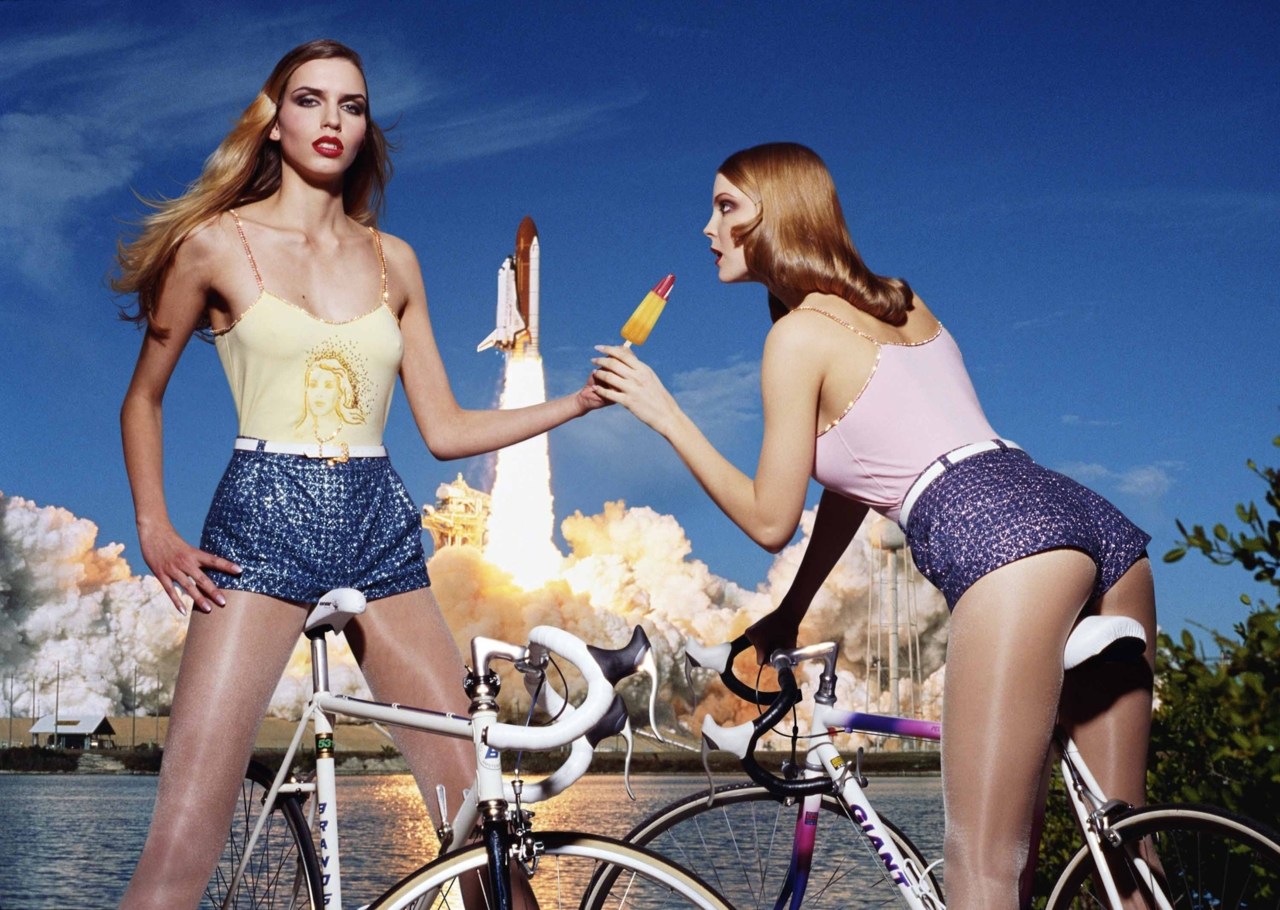
Kenneth Richard: What was your first gig where you felt that you were properly paid?
Inez Van Lamsweerde: The first one I can remember was an ad campaign we did quite early on. It was in 1996 for a German company called Joop!.
Kenneth Richard: Do you remember the first thing you bought with your money?
Inez Van Lamsweerde: I think it probably was a down payment on our New York apartment that we actually still live in.
Kenneth Richard: With the price of New York real estate, probably still paying it off.
Inez Van Lamsweerde: [Laughs] Yes!
Kenneth Richard: It’s funny how many people go through those struggles that you went through of meeting with reps, brands and publications that don’t hire you and then five years later, you are in a different place. What do you think those years taught you?
Inez Van Lamsweerde: It teaches you to stick to your own style. I remember clearly when we were meeting everybody that first year at PS1 in New York people would say to us, “Oh, no. I don’t want to represent you unless you only shoot black and white. Your models have too much makeup. They’re too styled up. This is grunge time. It’s not working.” We just thought, “No. We do what we do.” Eventually, everyone was done with the no makeup grunge look, and they all gravitated towards what we were doing, this sort of colorful disco story. It’s just about persisting and not getting sidetracked into following the trends.
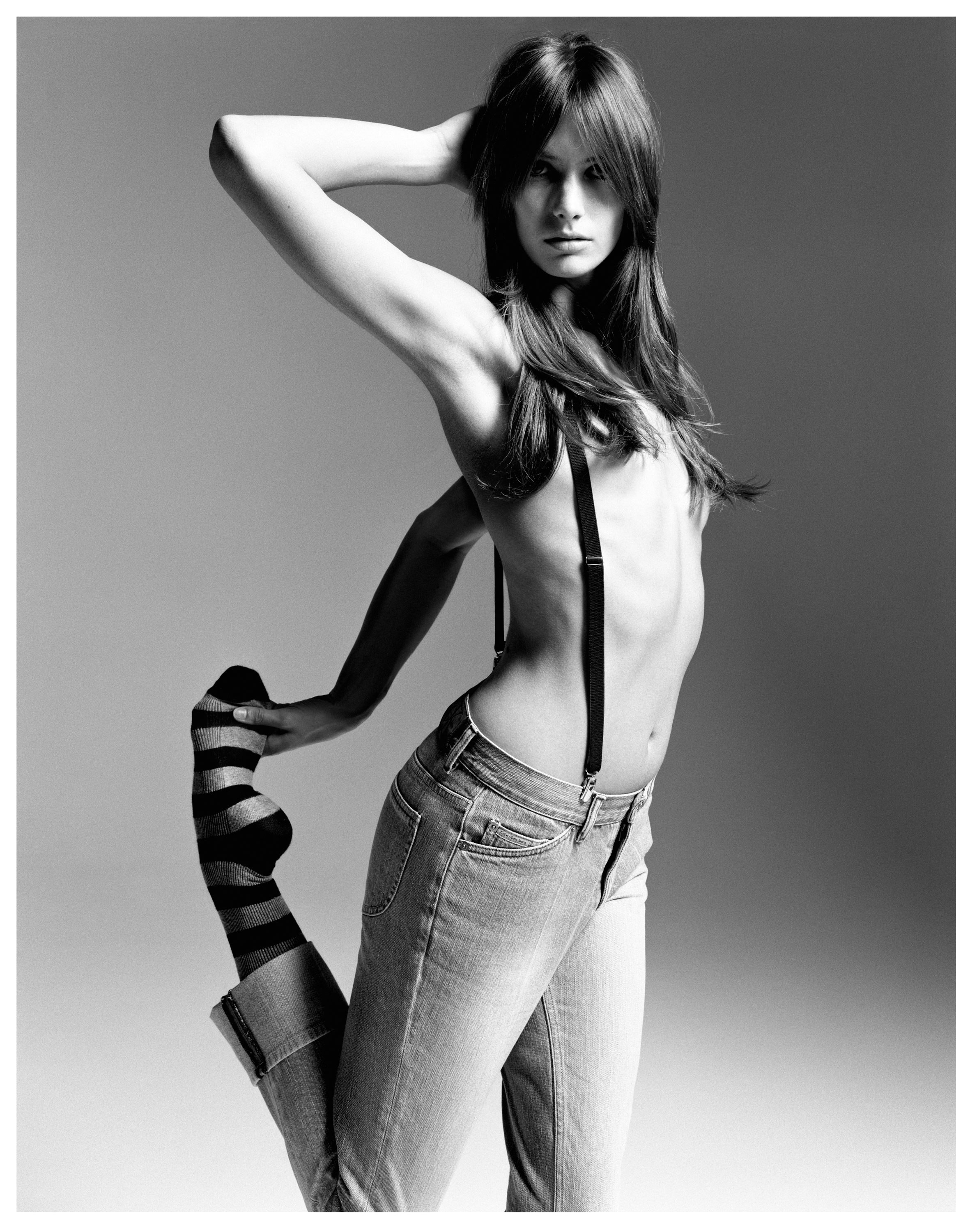
Kenneth Richard: You two were among some of the original pairs, which is quite common today, but not back then. Did you find people reacted differently to that?
Inez Van Lamsweerde: Definitely. In the beginning I remember magazines saying, “Oh my god! Two names?” especially since my last name is rather long, and then another name. “How do we do it?” That was a problem in the beginning.
Also, in the beginning, I think a lot of people felt intimidated. Editors or designers would be sitting there with two people instead of just one person to deal with. Then more and more people started working together and putting themselves out there as couples or duos in life and work. It also wasn’t right away that Vinoodh started taking pictures. That took a couple more years. Now we each have a camera, and we shoot at the same time. It’s as simple as that.
Kenneth Richard: With today’s demand for speed, it is advantageous to have a power couple – a pairing – running things.
Inez Van Lamsweerde: I think it’s wonderful. I couldn’t dream of doing it alone. Traveling is more exciting and wonderful when you get to be together. Because we shoot at the same time, we feel assured that the picture is always there. There is much less stress or concern as to whether you’re going to get the right shot or not. We each have our own vision on the shoot and we are able to look at each other’s work and think, “Oh, yeah. That’s an interesting way of looking at it.”
Kenneth Richard: What do you find as a source of inspiration now?
Inez Van Lamsweerde: I think we’re definitely inspired by film. We’re really looking forward to one day in our lives making a feature film or a television series or something along those lines.
I also think the thing that inspires us right now the most is companies like Instagram that enable you to kind of have your own magazine online, and to have your own audience with a direct line of contact and exchange of ideas or inspiration with people that you follow or the people that follow you. I think that’s such a liberating concept because it feels like so often in the past, you make a photograph but it doesn’t get published. Or you see something on the street or something around you or a friend that looks incredible or that’s inspiring. Before that, I always sort of felt like, “But what am I going to do with that?” Now there’s an outlet, and it turns everyone into a creative person. I think that really is how Instagram was born. I find it one of the most inspiring places around.
We just did a big project that was in a partnership with Instagram to do portraits backstage at the Golden Globes that would go on Instagram immediately as we shot them. That was such a brilliant experience because the people at Instagram’s main care is that the public enjoys using Instagram. Their interest is getting people to use Instagram with all its possibilities and feel inspired to make beautiful images. We like being around people who are image driven. It’s just wonderful that there is another, for lack of a better word, publisher out there offering incredible possibilities for images and communication of ideas.
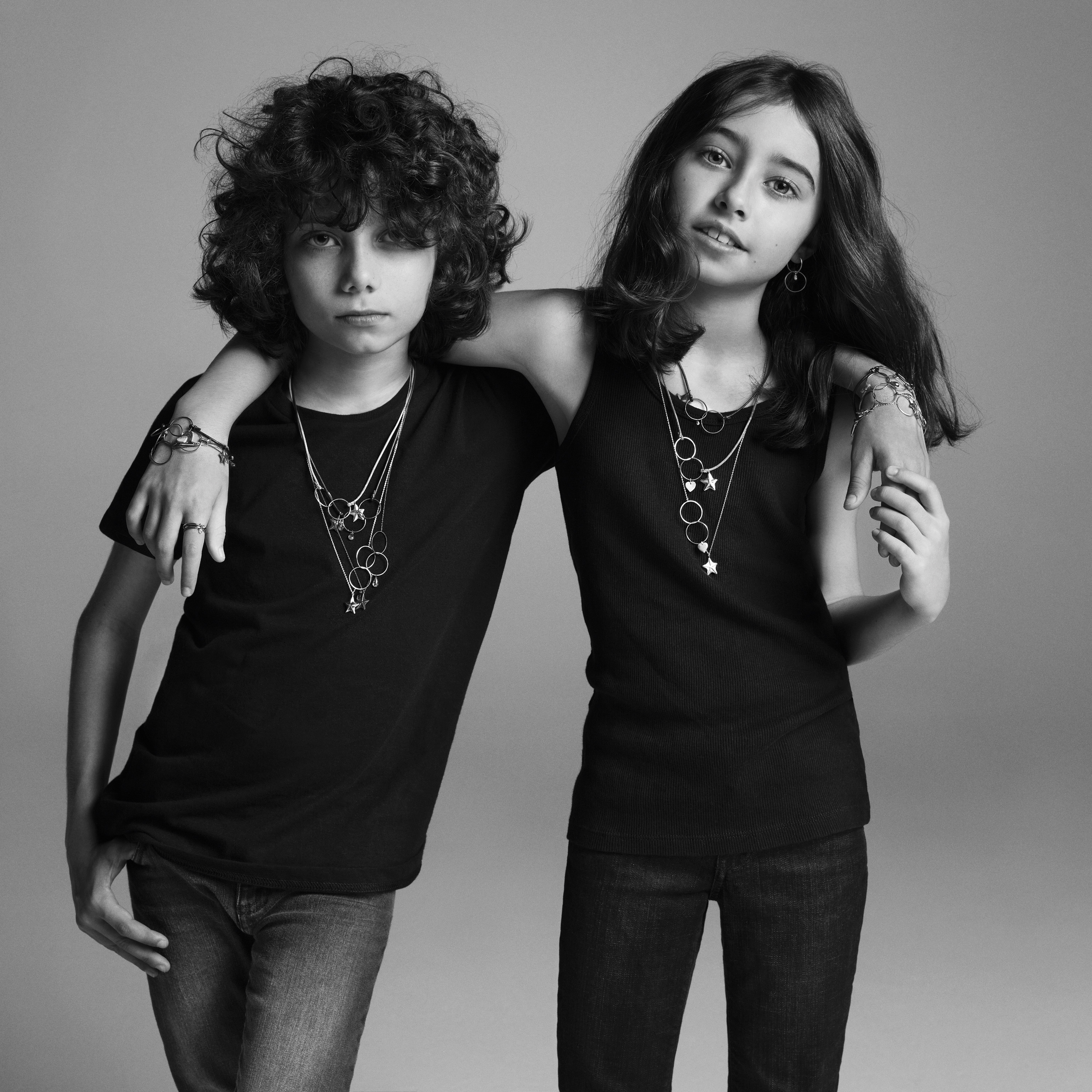
Kenneth Richard: And that was fairly impressive because it was like three minutes per person. Yet the quality of the work that came out of those three minutes made one think it was an all day shoot.
Inez Van Lamsweerde: That was it! After they accepted their Globe on stage, they came straight to us. You can imagine how happy they all felt; so the atmosphere was just wonderful. They also didn’t have much time because after us they had to go to the big room with the big press conference and everything. We had about ten clicks per person, and then the image had to be retouched and put out on Instagram within 15 minutes after we shot it. It was fast but very exciting. There were so many friends of ours who won that night. It was just wonderful to see them all backstage and be able to celebrate with them and make these iconic portraits of the people who just achieved something wonderful in their life. It was just an amazing atmosphere.
Kenneth Richard: Is there a particular moment that just resonated a bit with you where you find yourself walking down the street and that experience comes back to you?
Inez Van Lamsweerde: Briefly, one of them was definitely Lady Gaga crying on both our shoulders because she had won. She hadn’t really expected us to be there. She knew but then when she actually saw us, she started crying because we go way back with her. This was such a triumphant moment for her and it’s that thing where all of a sudden she could just let go of everything. It was just adorable.
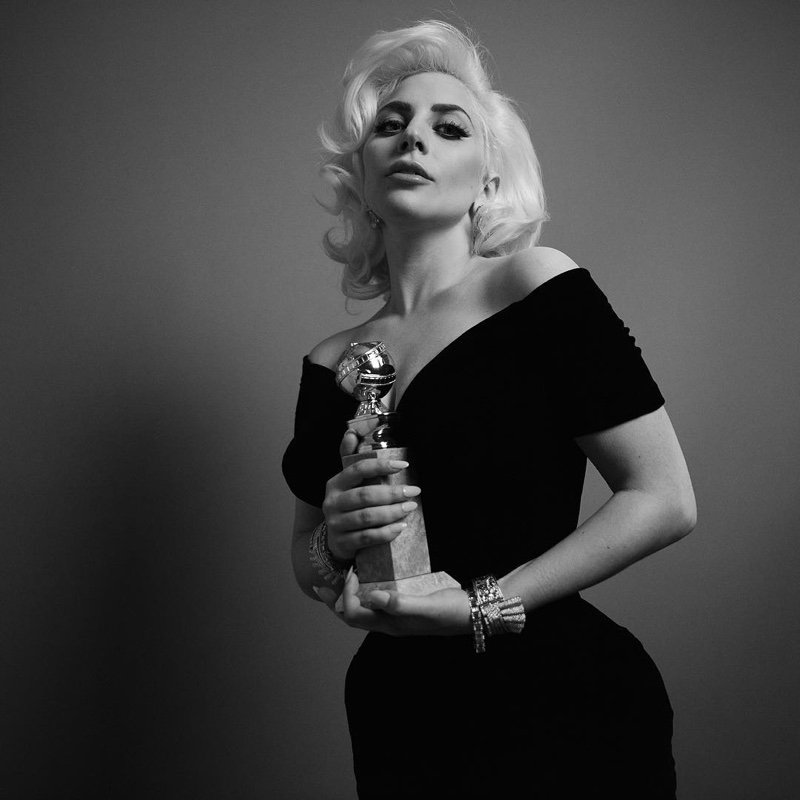
Kenneth Richard: When film and fashion first merged, it was just an extension of an image. And then as the dynamics shifted with technology, people were more interested in stories. Film makers started entering the fashion space with a beginning, middle and an end. I’m curious as to your thoughts about fashion and film and where they’re at.
Inez Van Lamsweerde: We love the fact that video or film has entered the realm of fashion. In my ideal world, I see every fashion film we do as a music video with really good clothes. I’m very inspired by film and by music. I like the fact that there is a non-linear story line possible.
I always had that feeling with photography – that although I get to make a beautiful picture of a girl, I don’t always do her justice without the full scope of the beauty of movement. So the fact that video enables you to also show the various parts of someone that you normally don’t get in a fashion photograph, adds mystery and romance. I usually am not a fan of dialogue in a fashion film unless it’s something very personal that has to do with the model or the person that is in the film. Strangely enough, I still have yet to see a fashion film with great dialogue that is not sort of “cringey”.
It’s one thing to have a beautiful smart script for a movie and make that come to life on the screen, it’s totally different to have a very short, sometimes only fifteen-second clip in which there is music, movement and feeling… Fashion has everything to do with a feeling with an amazing girl. If it is just three moments removed, it’s not so amazing.
It’s something you can’t teach or easily explain. It’s just this very fine line when something translates into an idea or feeling of fashion which makes you actually want to be her, and, thus, want to have the clothes or the shoes or the bag or whatever it is that you’re showing. For me, that is a very particular, fine moment, and I think great fashion photography, and fashion films, captures that element and evokes this desire to be that person and have her life, which makes you want to buy the clothes. It’s not a given that a great film director could also make a great fashion film because it’s a certain feeling for when the girl’s at her best. It’s not that simple. It’s not just a beautiful girl in a great outfit.
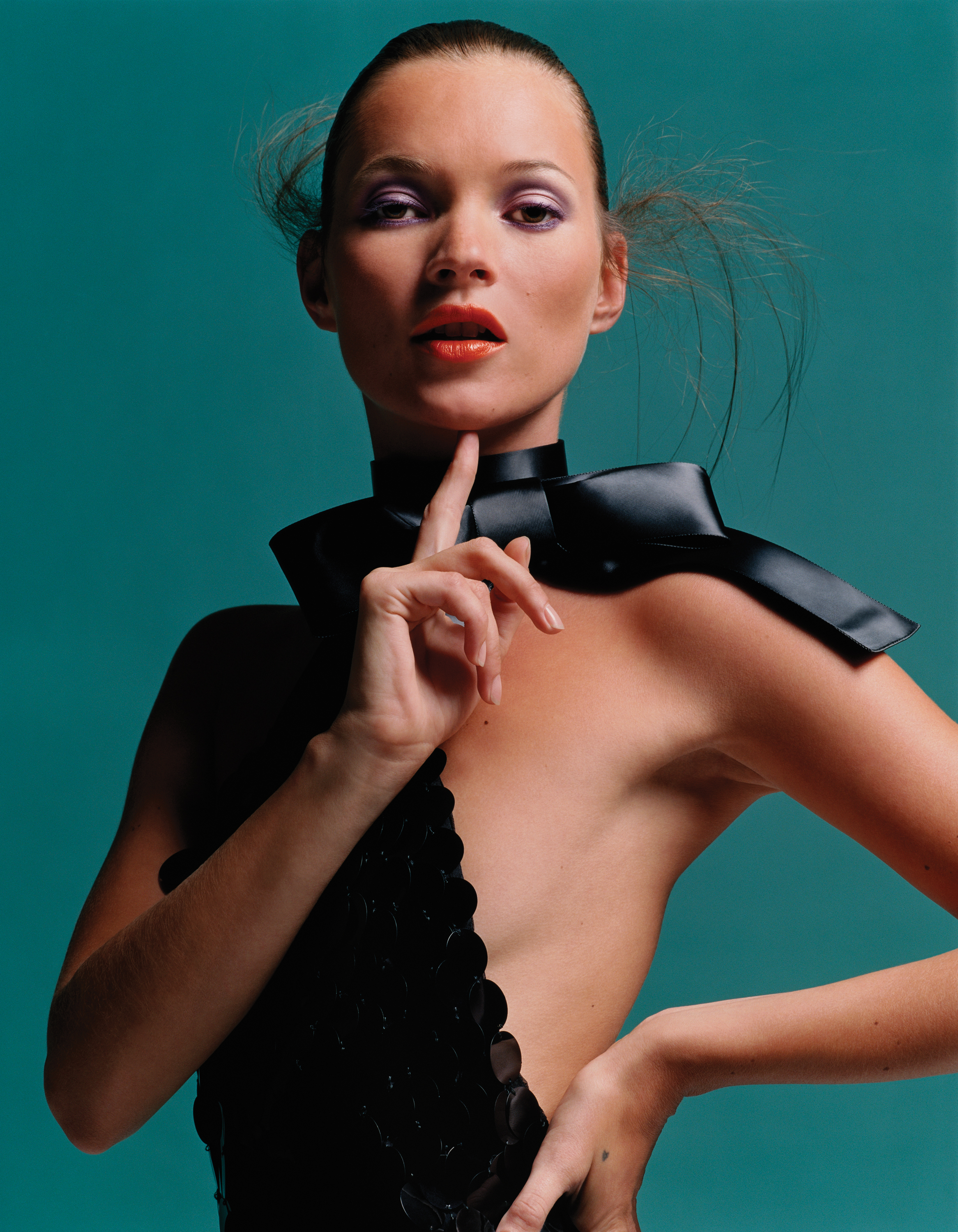
Kenneth Richard: You’ve eloquently expressed the nuance of fashion. So many “big ad agencies” or new digital agencies put their hand in fashion thinking they can do it simply with a beautiful girl, a great photographer, and a logo.
Inez Van Lamsweerde: No, that’s the thing. It’s something that is not easy to explain and I guess it’s like that thing where you either have it or you don’t. Or the girl has it or she doesn’t. I think there’s something exciting I feel once the video cameras start rolling that it’s, you know, you gotta move!
Kenneth Richard: Flow.
Inez Van Lamsweerde: It’s hard to grasp. It’s why it’s always changing, and that’s why it’s exciting, because there is this constant evolvement and at the same time, fashion is built on nostalgia. We all constructed our own identities when we were in our teenage years. The music we liked came with a certain style. Take David Bowie, for instance. He had so much influence on how you dressed, how you behaved, which group of friends you’d belong to, what concerts you’d go see. That period of finding your own identity, your sexuality, your hair, your makeup, the group you belonged to, is the most transformative period of anyone’s life, and I think what fashion does is a constant diving back into those memories, revisiting style elements that at a time were even disgusting in your mind but now are just amazing, or have a certain humorous value to them.
Which makes you think about now, how you’re actually glorifying the thing that you were disgusted by when you were a kid growing up in the ’80s or whatever. I think that’s what fashion is built on. It’s a constant collage of nostalgic elements that create a new look. As the designers get younger, the time catches up more and more. Now everyone’s working on the ’90s because they were all in their teenage years in the ’90s. It’s very interesting for me to see how all of these things keep cycling back and forth. It’s an interesting game, and it’s always inspiring.
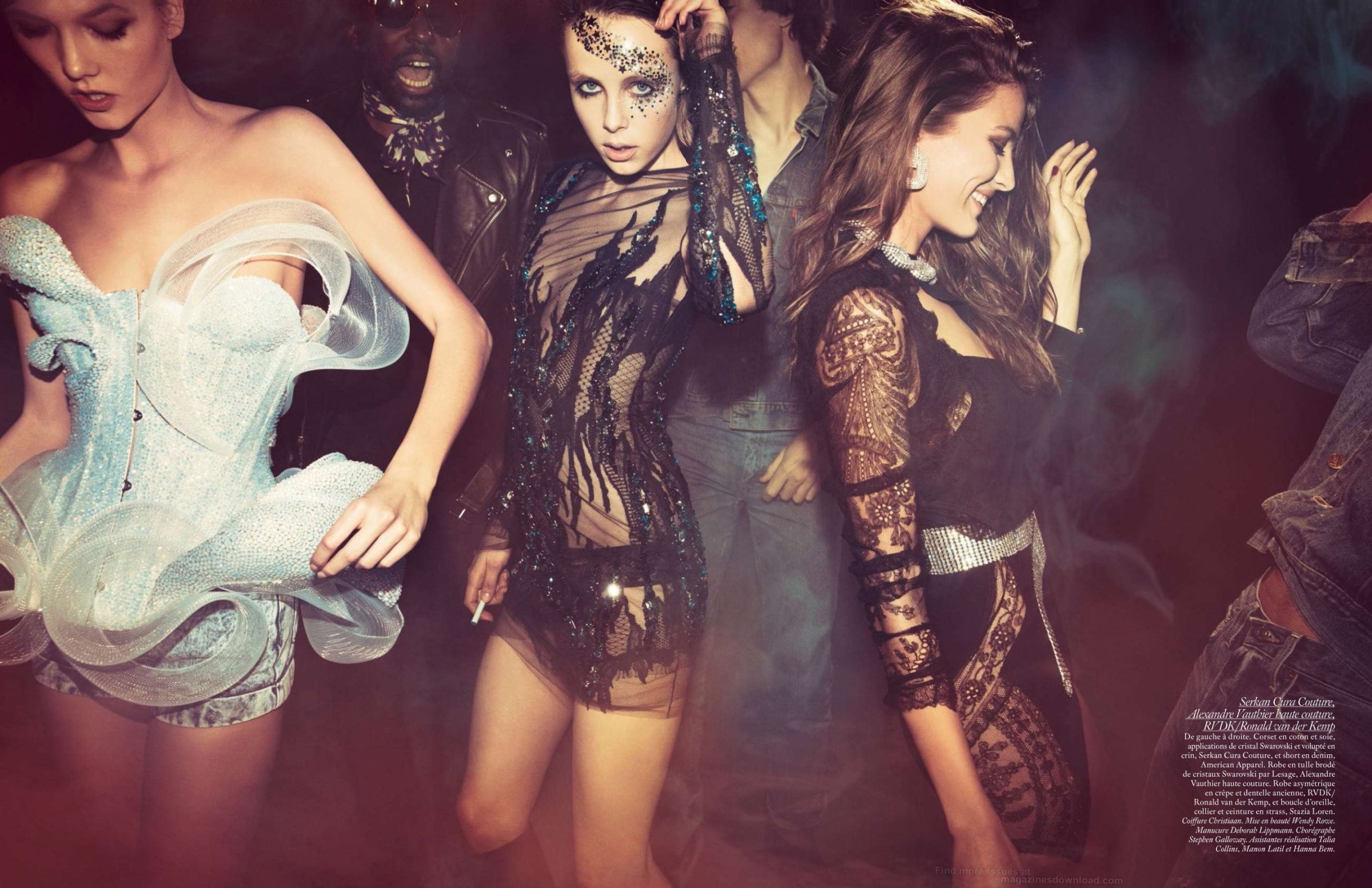
Kenneth Richard: Musically, how do you get your kicks?
Inez Van Lamsweerde: I’m very basic. Vinoodh has a much broader taste in music than I do. With me, it’s give me Michael Jackson, David Bowie, Lady Gaga and Disclosure and I’m good. But, of course there are so many songs that trigger a lot of the memories of my youth. Most of them are grounded in disco and new wave because those were the two periods when I was between fourteen and eighteen. But, I have to say, Vinoodh is much more versed in a variety of different music that he loves.
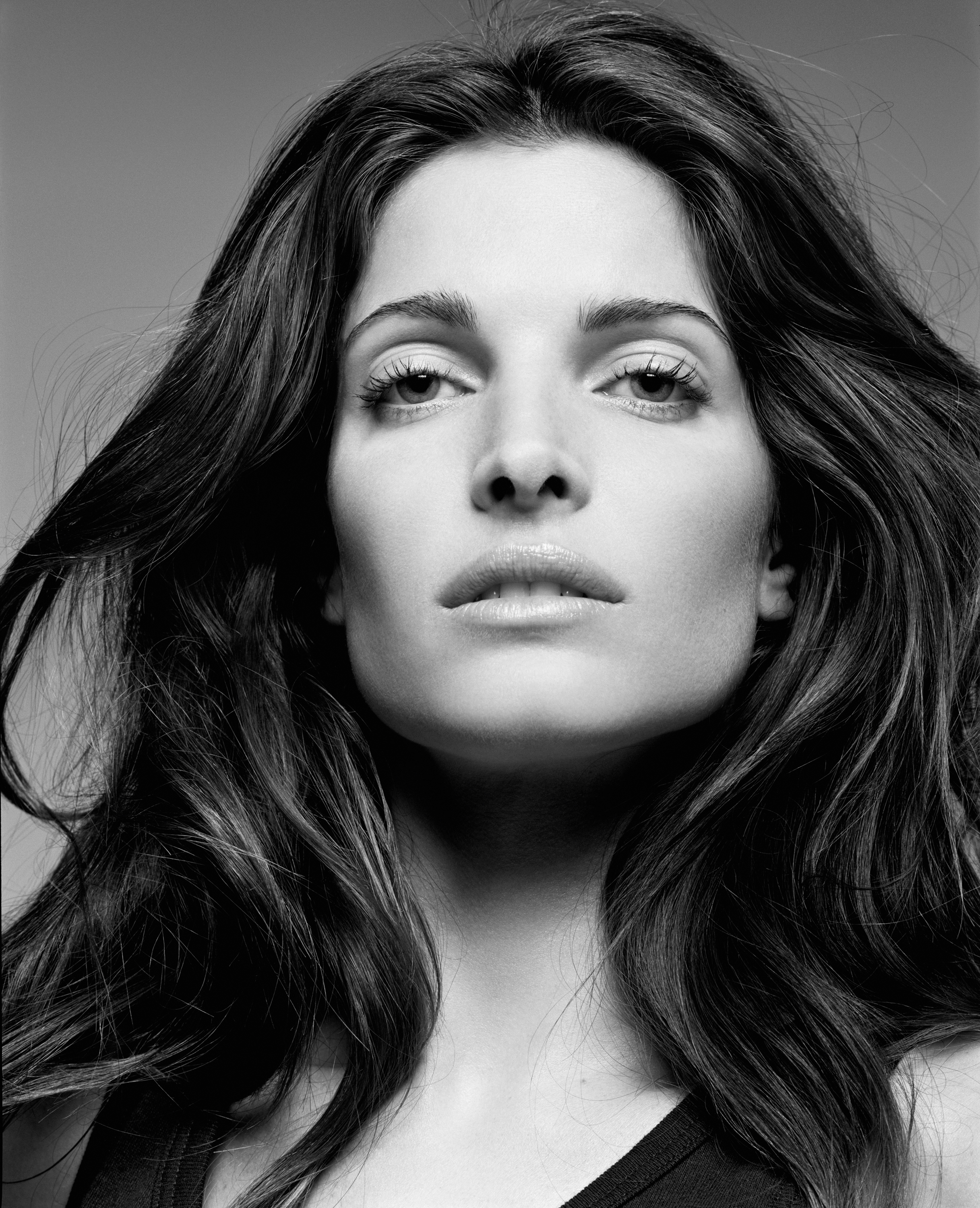
Kenneth Richard: What about film?
Inez Van Lamsweerde: It’s so fascinating to me because now that we have a son who is twelve, we find that there’s this whole period of movies that we completely missed, which everyone here in New York keeps saying, “Oh my god! You never saw Ferris Bueller’s Day Off?”
Kenneth Richard: You missed all of John Hughes?
Inez Van Lamsweerde: We missed that whole period because we lived in Amsterdam. We both grew up in Amsterdam and saw films by Ingmar Bergman or Fellini or Visconti or Fassbinder. Those were the films that formed us. So, consequently, there is a whole world of American 80’s movies that we missed. We’re trying to catch up on all that now with our son, who is the age to see all of that right now. It’s wild that there’s a certain period that just completely blew over for us.
Kenneth Richard: Well, enjoy all that teen angst and watch out for Weird Science.
Inez Van Lamsweerde: Right! Too late!
Kenneth Richard: Inez, thanks for chatting and best to Vinoodh.
Inez Van Lamsweerde: Thanks, Kenneth
